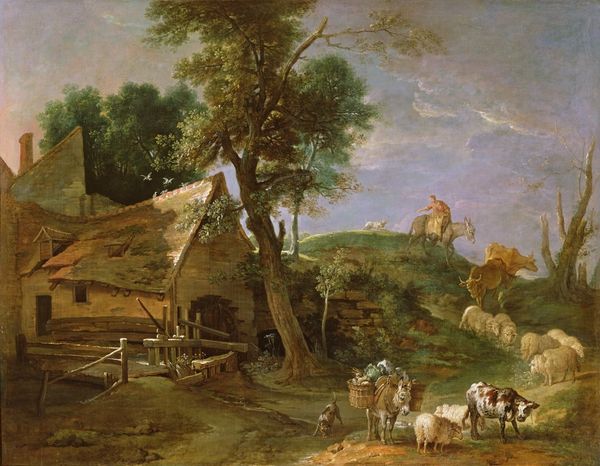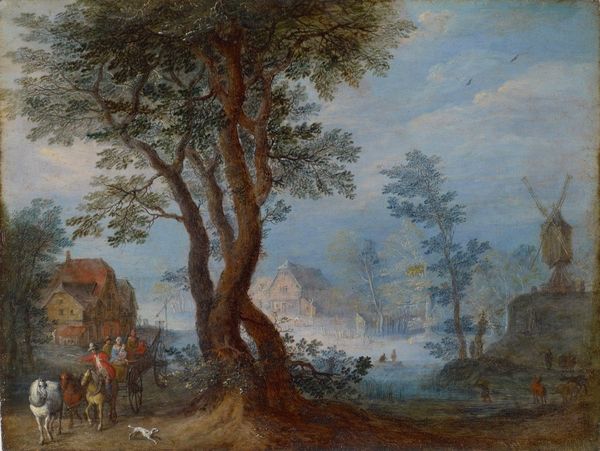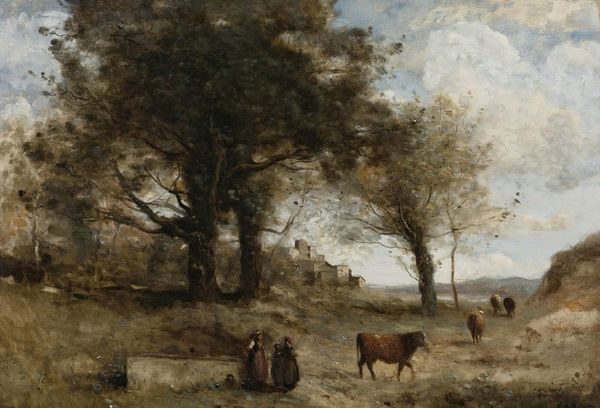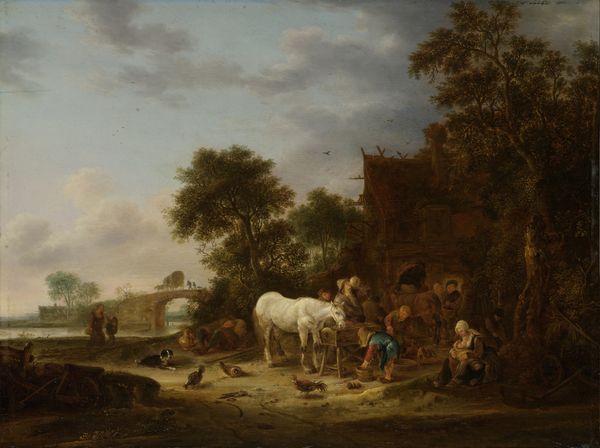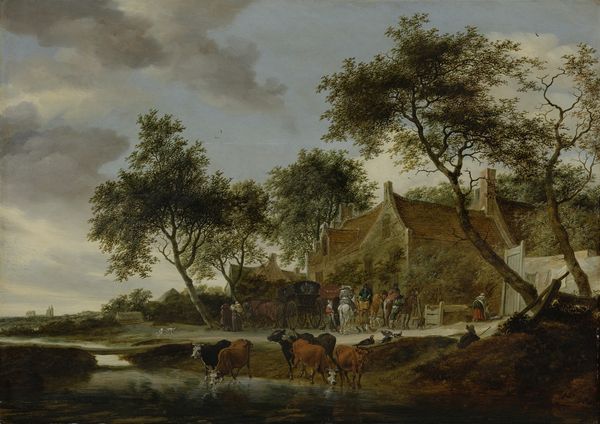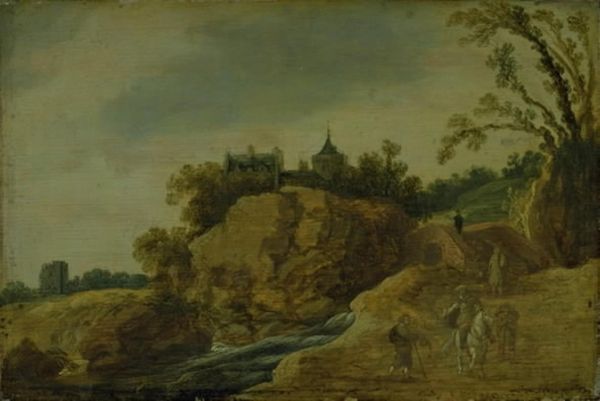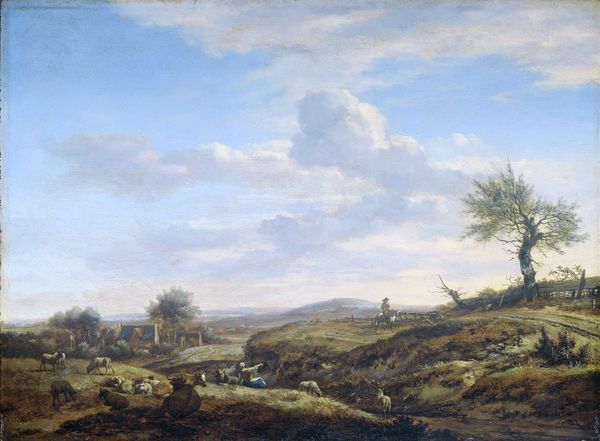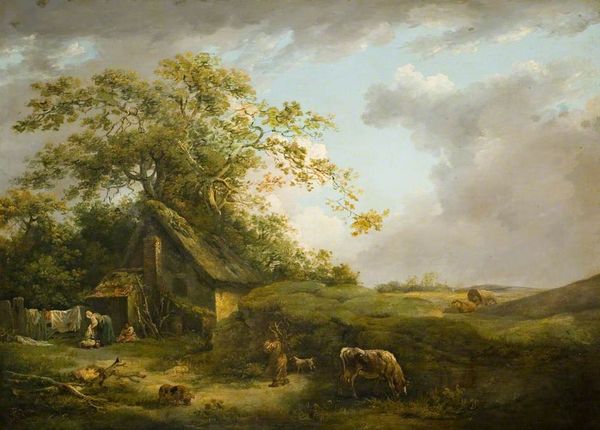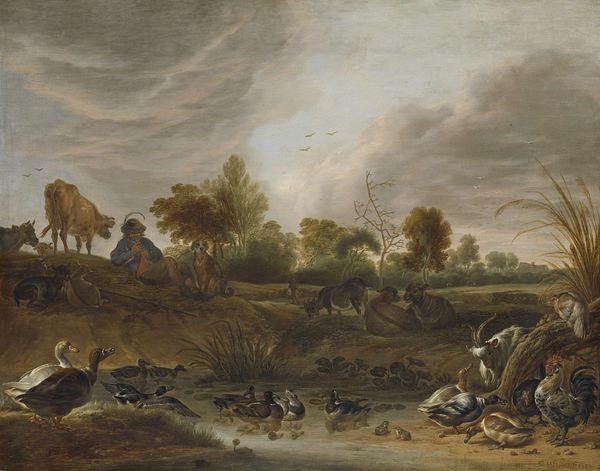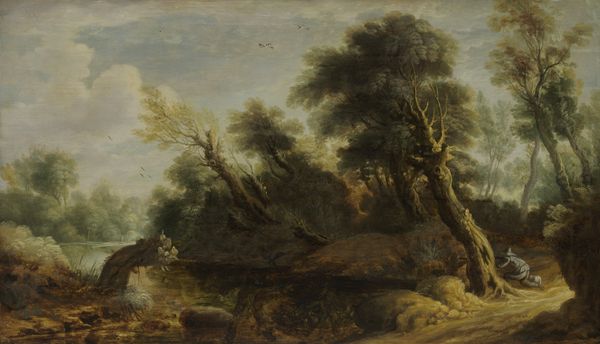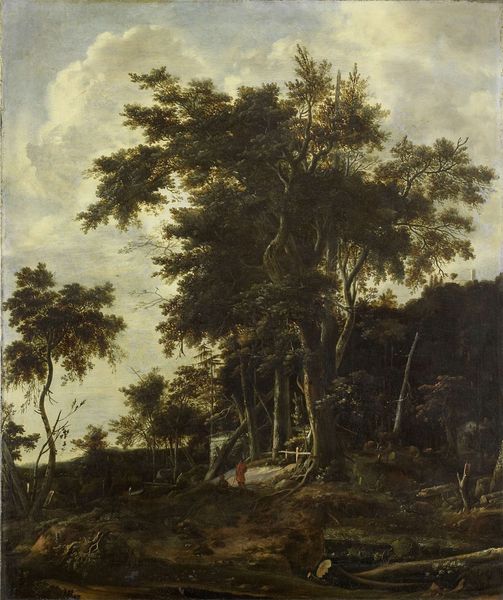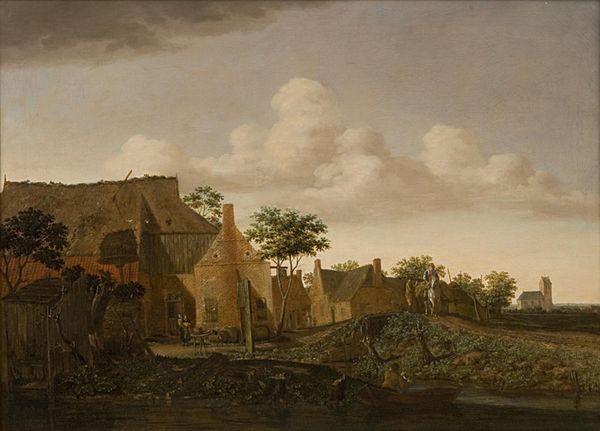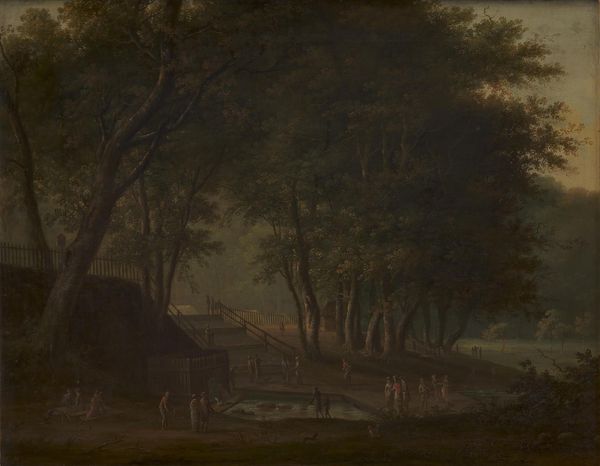
plein-air, oil-paint, impasto
#
dutch-golden-age
#
plein-air
#
oil-paint
#
landscape
#
oil painting
#
impasto
#
genre-painting
#
realism
Dimensions: height 24.7 cm, width 32 cm, height 23.4 cm, width 29.2 cm, depth 6.5 cm
Copyright: Rijks Museum: Open Domain
Editor: Here we have Paulus Potter’s "A Herdsman's Hut," painted around 1645. It's an oil on panel, and something about the muted colors gives it a very serene feeling, like time is standing still in this little pastoral scene. What do you see in this piece, looking at it through your lens? Curator: It's intriguing how Potter uses the mundane – a simple herdsman, ordinary livestock, and a humble dwelling – to evoke something much larger about our relationship with nature and perhaps even ourselves. Notice the symbolism imbued in the animals, each species representing various aspects of human life. Consider the cultural significance of livestock in 17th-century Netherlands. Editor: Are you saying each animal type would carry different meanings? Curator: Precisely! Cows, for example, might symbolize prosperity and nourishment. The sheep could represent docility and adherence to societal norms. And what about that little birdhouse? What meaning might it hold? Does it add a layer of domesticity or commentary on freedom? Editor: Interesting… It also seems like it connects with humans making homes for themselves but also caring for others like the birds, within that landscape. Curator: Absolutely! Potter weaves together these visual elements to construct a commentary on humanity's role within the natural order, and perhaps its responsibility. Consider that it was painted en plein air, it creates a different mood… A realistic yet carefully crafted image designed to resonate on multiple levels. Editor: I hadn't considered the potential symbolism of the animals, or the act of it being painted outdoors! It definitely adds another layer to understanding its cultural meaning. Curator: Exactly, and that's how the work continues to resonate with viewers centuries later, provoking questions and conversations about human relationships. It provides enduring motifs regarding what our cultural memory carries. Editor: I now appreciate that this isn't just a pretty landscape, but a kind of statement on our place in the world, reflected in what we consider commonplace.
Comments
No comments
Be the first to comment and join the conversation on the ultimate creative platform.
